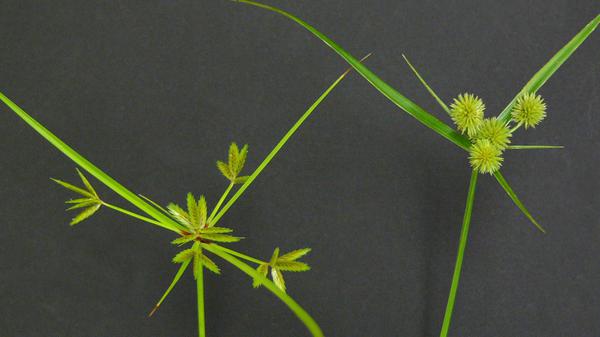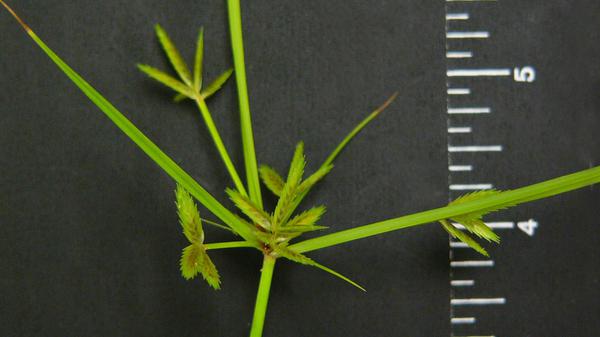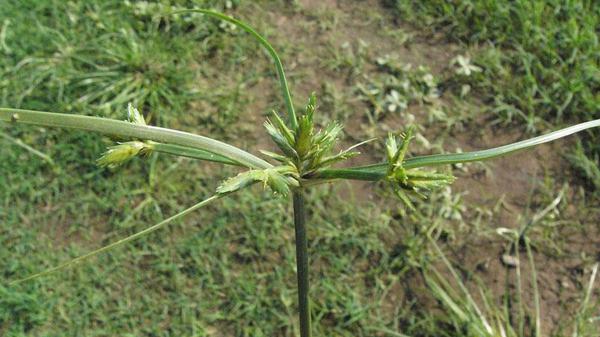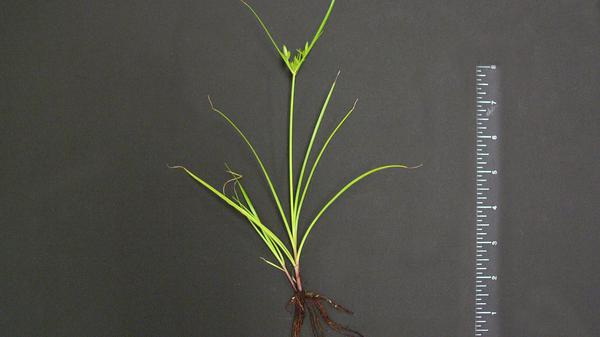Description
Annual sedge (Cyperus compressus) is one of the few sedge species that is a true annual. As a result, this sedge is easier to control than many other perennial sedges. Annual sedge has a very characteristic seedhead that tends to be relatively large compared to other sedges, and the seedhead is flattened with a toothed outline. Annual sedge tends to have a more "clumpy" appearance than other sedges particularly when it occurs in low densities. This sedge also tends to emerge later in the spring / summer than most other sedge species.
Cultural Control
This sedge also tends to emerge later in the spring / summer than most other sedge species. Sedges are weeds that resemble grasses but unlike grasses, sedges have three-sided or triangular stems. It is important to properly distinguish sedges from grasses because management is totally different. Sedges are plants that thrive in wet or poorly drained soils but can survive in areas that are not wet. Because of frequent irrigation in highly maintained turf, sedges often thrive in the turfgrass environment. Sedges often become established in wet areas and spread to other areas that are not poorly drained or wet areas. Therefore, it is important to recognize areas where sedges can become established and prevent spread of these sedge species to other areas of the golf course or landscape.
Species Data
Publication date: Oct. 26, 2017
Recommendations for the use of agricultural chemicals are included in this publication as a convenience to the reader. The use of brand names and any mention or listing of commercial products or services in this publication does not imply endorsement by NC State University or N.C. A&T State University nor discrimination against similar products or services not mentioned. Individuals who use agricultural chemicals are responsible for ensuring that the intended use complies with current regulations and conforms to the product label. Be sure to obtain current information about usage regulations and examine a current product label before applying any chemical. For assistance, contact your local N.C. Cooperative Extension county center.
N.C. Cooperative Extension prohibits discrimination and harassment regardless of age, color, disability, family and marital status, gender identity, national origin, political beliefs, race, religion, sex (including pregnancy), sexual orientation and veteran status.




